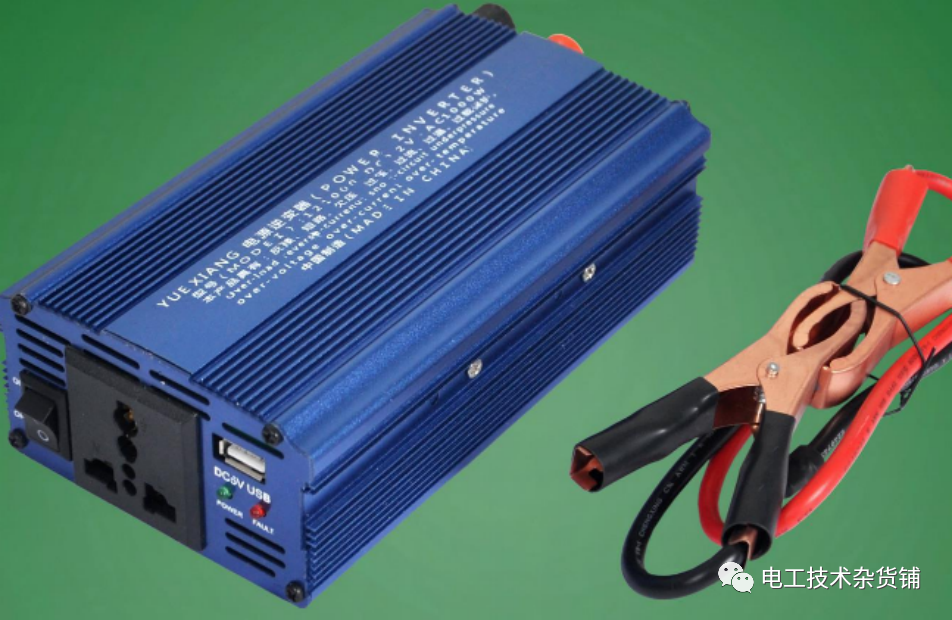The role of the inverter
The role of the inverter

1. What is an inverter
The inverter is a device that converts DC power (battery, storage battery) into AC power (generally 220V, 50Hz sine wave). It consists of inverter bridge, control logic and filter circuit. Widely used in air conditioners, home theaters, electric grinding wheels, electric tools, sewing machines, DVD, VCD, computers, TVs, washing machines, range hoods, refrigerators, VCRs, massagers, fans, lighting, etc.
In foreign countries, due to the high penetration rate of automobiles, the inverter can be used to connect the battery to drive electrical appliances and various tools to work when going out to work or travel. The car inverter output through the cigarette lighter is 20W, 40W, 80W, 120W to 150W power specifications. Some higher power inverters need to be connected to the battery through connecting wires.
Connect household appliances to the output of the power converter to use various appliances in the car. The electrical appliances that can be used are: mobile phones, notebook computers, digital cameras, cameras, lights, electric shavers, CD players, game consoles, handheld computers, electric tools, car refrigerators and various travel, camping, medical emergency appliances wait.
2. What is the function of the inverter
1. Maximum power tracking function to ensure maximum output power
The current and voltage of the solar panel change with the intensity of solar radiation and the temperature of the solar module itself, so the output power will also change. In order to ensure the maximum output power, it is necessary to obtain the maximum output power of the solar panel as much as possible. The MPPT tracking function of the inverter is designed for this characteristic.
MPPT tracking is also called maximum power point tracking. According to calculations, the power generation of the system configured with MPPT tracking can be 50% higher than that of the system without MPPT tracking. Therefore, if you want the photovoltaic system to generate more electricity, don’t just look at the solar panels. How much of the electricity generated by the solar panels can be effectively output in the end depends on the inverter.
2. Anti-individual operation function to ensure the safety of the power grid
When installing a photovoltaic system, many people hold the mentality of "even if the power grid fails, their home can still use electricity. As everyone knows, when the power grid fails, the photovoltaic system of their home will also stop operating. The reason for this phenomenon is that now The inverter is generally equipped with an anti-islanding device, and when the grid voltage is 0, the inverter will stop working.
3. According to the output power of solar panels, automatic operation and shutdown
After sunrise in the morning, the intensity of solar radiation increases gradually, and the output of solar cells increases accordingly. When the output power required by the inverter is reached, the inverter starts to run automatically. After starting to run, the inverter will monitor the output of the solar cell components all the time. As long as the output power of the solar cell components is greater than the output power required by the inverter, the inverter will continue to run; it will stop until sunset, even on cloudy and rainy days. The inverter also works. When the output of the solar cell module becomes smaller and the output of the inverter is close to 0, the inverter will form a standby state.
3. What are the types of inverters?
1. According to the nature of source and flow
Active inverter: It is an inverter that connects the current in the current circuit to the grid on the AC side without directly connecting to the load.
Passive inverter: An inverter that enables the current in the current circuit to be directly connected to the load without being connected to the grid on the AC side (that is, to invert the DC power into a certain frequency or an adjustable frequency AC power supply to the load).
2. According to the type of grid connection
Divided into off-grid inverters and grid-connected inverters.
3. According to topology
Divided into two-level inverters, three-level inverters, and multi-level inverters.
4. According to the power level
Divided into high-power inverters, medium-power inverters, and low-power inverters.
4. How to choose a power inverter
1. Rated output voltage
Within the allowable fluctuation range of the specified input DC voltage, it indicates the rated voltage value that the inverter should be able to output.
The stable accuracy of the output rated voltage value is generally stipulated as follows: in the steady state operation, the voltage fluctuation range should have a limit, for example, the deviation should not exceed ±3% or ±5% of the rated value. In the case of sudden load changes or other disturbance factors, the output voltage deviation should not exceed ±8% or ±10% of the rated value.
2. Unbalance of output voltage
Under normal working conditions, the unbalance degree of the three-phase voltage output by the inverter (the ratio of the reverse sequence component to the positive sequence component) should not exceed a specified value, generally expressed in %, such as 5% or 8%.
3. Waveform distortion of output voltage
When the inverter output voltage is sinusoidal, the maximum allowable waveform distortion (or harmonic content) should be specified. It is usually expressed by the total waveform distortion of the output voltage, and its value should not exceed 5% (10% is allowed for single-phase output).
4. Rated output frequency
The frequency of the AC voltage output by the inverter should be a relatively stable value, usually the power frequency 50Hz. Under normal working conditions, the deviation should be within ±1%.
5. Load power factor
Characterize the ability of the inverter with inductive load or capacitive load. Under the condition of sine wave, the load power factor is 0.7~0.9 (lag), and the rated value is 0.9.



























 XINDA
XINDA